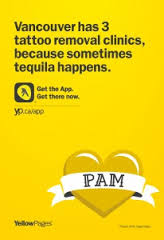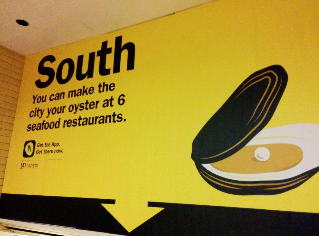What’s the purpose of content?
While marketers love “creating great content” that’s “high quality” and “relevant,” that’s not the goal.
The goal is to attract customers.
And keep them.
This is what you need in a customer worthy content marketing strategy.
Micro Content As The Foundation
The hardest thing about “content” it applies to almost everything.
It’s like someone saying: “We’re a restaurant, and we’re going to feed people with food.”
Food is like content.
It’s too generic.
Gluten free Asian fusion served in to-go containers during lunch hour on the corner of Cambie Street and West Hastings for busy professionals in Vancouver is micro-content.
To succeed, you need to think micro.
Because while the concept stays the same – aka fast take out for busy professionals with food allergies – the execution, concept and tone is different. It’s why some McDonald’s have chandeliers and why others a few blocks away have old lights and an almost “abandoned” look.
It’s the same company, adjusted to satisfy the needs of their customers in specific areas.
I know Asian fusion and McDonald’s aren’t content. I’m using them as an example to show you how important it is to cater your content – or how you promote your food – to your customers.
The fastest way to do this is relevance.
Relevance As The Winning Ingredient
Yellow Pages is doing a fabulous job creating relevance with their customer base.
To promote their new mobile app, which helps you find anything in your city, they’re using specific examples in their marketing campaigns:
“Vancouver has 3 tattoo removal clinics, because sometimes Tequila happens.”
“You can make the city your oyster at 6 seafood restaurants.”
“Not happy with your new hairdo? There are 62 hairstylists nearby that can redo it.”
Their goal is to show that “your entire neighbourhood is in your pocket.”
So instead of putting that on one poster throughout the city, they’re creating tons of mini-examples that people can relate to.
Because while I might think about “hot food” or “my neighbourhood,” when I’m hungry I’m thinking about something more specific than hot food, just like when I’m looking for something in my neighbourhood I’m thinking more specific than my neighbourhood.
- Like “How can I find a tattoo removal company [in my neighbourhood]?”
- Or “Where do you want to eat tonight [that has hot food]?”
The “hot food” and “my neighbourhood” are implied. So they don’t resonate as much as the specifics of “how do I get my tattoo removed” or “where is the best gluten free Asian cuisine?”
This is a beautiful example of micro-content. It’s not about one poster or tagline, it’s about lots of targeted micro-posters and taglines.
Most of us don’t have the budget to plaster our city with micro content. But we do have the ability to personalize our messages online, especially through our social channels.
This is why the content you create for Facebook will be slightly different than for Twitter and LinkedIn.
Adapting To Our Organic Behaviours
The key to creating relevance is understanding that people change.
Our desires, habits and tendencies are organic, which means they shift throughout the day, weeks and years.
You’re the same company, providing the same service, yet what you say and how you say it will vary depending on who you’re trying to attract and their attention levels at different times of the day in different settings. This is why:
- A blog post on “10 Ways To Reduce Backaches At The Office” might be a good post for a physiotherapist to share in the morning (when someone is having their breakfast).
- While a quick tip from that post will be good to share on Twitter throughout the day (when someone is looking for a quick break).
- And a poster outlining the positions will be a good share on Facebook in the afternoon and evening (when someone’s board + looking for visual stimulation).
It’s the same concept – how to reduce backaches – shared slightly differently in different mediums at different days to target your ideal customer.
There’s one more thing your content marketing strategy needs to excel…
Making Us Sparkle
I started by calling this section: “Keeping us entertained.”
But that sounded too generic.
When I think of entertainment, I think of Hollywood movies and videos, and that can be intimidating for smaller marketing teams.
What we really mean is how can you spark an emotion in someone?
How can you delight someone? Make them laugh? Sparkle? Cry? Smile? Cringe? Remember you?
People are people. As renowned social scientist Brene Brown says: “We’re all looking for human connection.”
Your goal is to find a way to create content that makes people feel a connection. That will capture your customer’s attention, and help them remember you. Human connection is a great way to build and deliver on relevance.
The Cornerstone Of Your Content Marketing Strategy
Inbound marketing is about attracting people who are interested in what you do and nurturing them over time so they become your customers.
One of the best ways to attract them is by creating remarkable content. And one of the best ways to keep them is to delight them (with remarkable content) so they continue being customers.
That’s not the only way to keep customers happy.
So, what else do you do?





